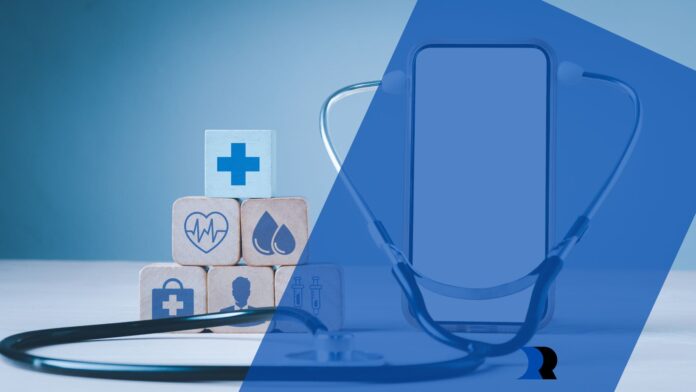Have you ever heard of the phrase Internet of Things or IoT? The IoT is an abbreviation that describes a network of devices or “things” that come with specialized software, sensors, or other technologies.
The purpose of these devices is to connect to other devices, systems, or over the Internet, to exchange data. They can be used for many things, but perhaps their most meaningful contributions come from medicine.
As with any upcoming technology, the Internet of Things still has a long way to go to integrate into the healthcare system fully. Through the rigorous evolution of technology and the strides made in software development in healthcare, this will soon be achieved.
In this article, we will discuss the current developments in healthcare today.
IoT and Patient Records
The first thing that happens when you walk into a healthcare institution is healthcare professionals look up your patient charts and records. But how does this tie to the Internet of Things?
Simply put, with the evolution of technology, looking up and managing your patient records is done digitally. Different devices access, store, and modify your patient records.
Depending on the factors like the scope of the needed information and interoperability, there are two main types of patient records today.
Electronic Health Records or EHR and Electronic Medical Records EMR. It’s essential to know the difference between EMR vs EHR, as the information they encompass and the data they provide differ.
IoT Basic Applications in Healthcare
Now that we talked about the most critical application, we can talk about some of the more basic but significant implementations of the technology.
Remote Patient Monitoring
The Internet of Things allows for real-time monitoring of patient’s health records and statistics. Things like digital cameras and wireless sensors can help predict unwanted behavior. They can help make the correct choice during high-stress situations when an informed decision needs to be made in a suitable amount of time.
Wearable Smart Accessories
With the introduction of different digital wearable devices, personal well-being has been a massive leap forward. Smartwatches have become a standard in most developed countries, and rightfully so.

These devices use different trackers to collect and display accurate time health data such as several steps for that day, and calories burnt, they can monitor water drinking habits, and most notably, they have built-in sensors that can display the heart rate, blood pressure, and even blood sugar of the wearer.
Smartwatches can be helpful for people who need to keep an eye on these things, as they don’t need to carry bulky devices around.
Boost in the Efficiency of Operations
The main benefit of these devices is that they can speed up menial tasks in healthcare organizations. Things like management of inventory and keeping track of assets are examples of things that affect the organization of work.
They can also be used for better management of human resources and workflow. Nowadays, it’s common for medical institutions to have buttons that allow patients to communicate with healthcare professionals directly.
Risks and Potential Drawbacks of IoT in Healthcare
One of the most often talked about issues with IoT is the security concerns that come with the technology.
Security Risks
IoT devices have simple motherboards and simple software that don’t have a way to be updated. Such things as vulnerabilities are rarely found, and even more rarely, patches on these kinds of devices.
Because of this, data often is a target in these medical institutions. Some might even say that data is the most valuable thing in the world. This is why it is essential to encrypt and safely square data.
Ethical Considerations
With this digital evolution, an exciting issue comes up. Ethical concerns of patients arise as to who owns their data. Personal information is not something that should be shared without consent.

This problem must be addressed in any medical institution that wants to implement the—constructing an adequate plan that establishes clear guidelines for what can and cannot be done is the best way to do this.
Modern Implementations of the Internet of Things in Medicine
With technologies such as wireless smartphones, cameras, and microphones, digital communication is established easier than ever before.
In this part of the article, we will discuss one of the most exciting applications of this technology and some future ideas on how IoT can be used.
Online Consultations And Telehealth
With the introduction of IoT, there has been a massive stride forward in how we view medicine and medical practices. Especially in recent years, due to COVID, remote communication is all the rage.
For modern hospitals and medical institutions, in-person check-ups can be replaced by online remote diagnostics.
Potential Future Applications
As with any current technology, there is a rapid evolution in devices belonging to the Internet of Things realm.
With constant development, there comes constant adaptation and cross-communication between all kinds of different devices. For example, voice assistants like Alexa or Google Home can change the light color or turn off lights completely.
All of the things that we mentioned in the text so far are just prospects of how this technology can be implemented. The technology is a long way from being fully implemented.
Conclusion
The Internet of Things, or IoT, is an ultimate tool in medicine. IoT has enormous potential to revolutionize healthcare by allowing remote patient monitoring, online consultations with patients, and making the operation performed in medical facilities more efficient and effective.
However, the technology is far from perfect. It has a lot of unpolished details like security risks and ethical concerns. Because of the way that these devices need to be constructed, they fall victim to cyber-attacks. This is why securing systems and data is essential before using this technology.
Any issues like this need to be sorted out before any serious implementation of this technology can be made.


